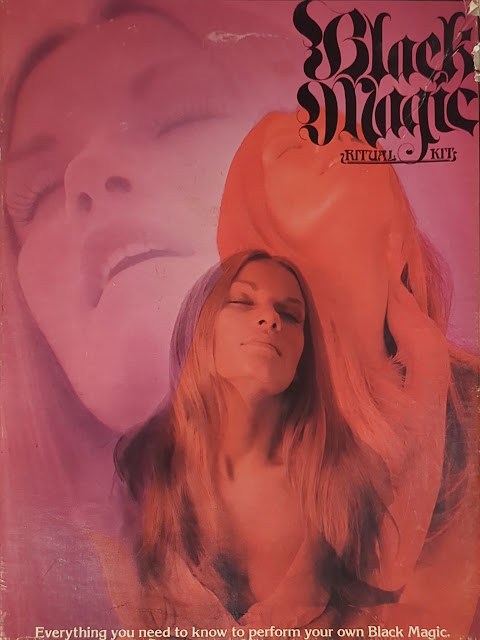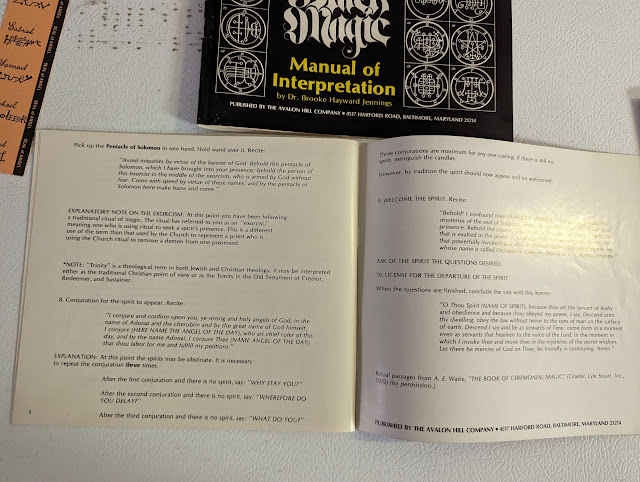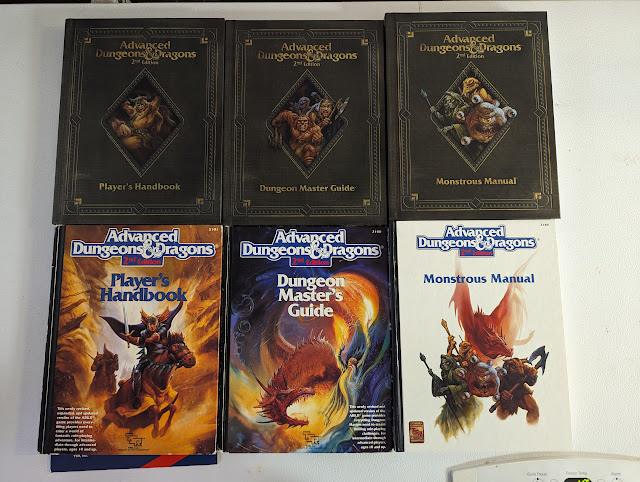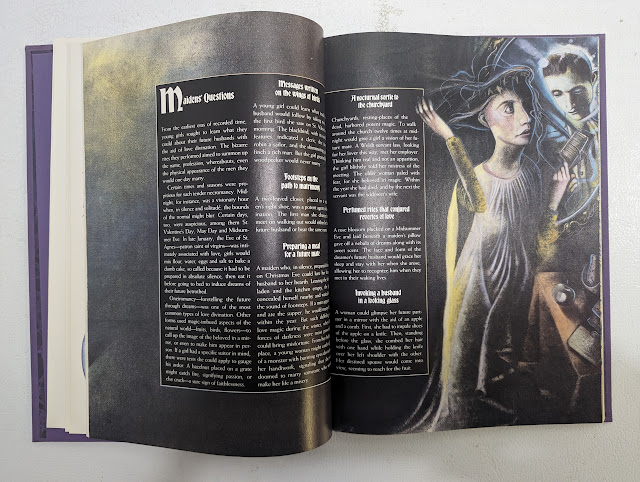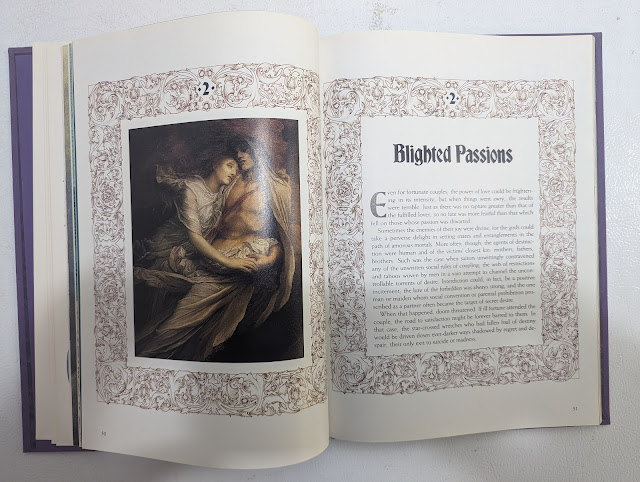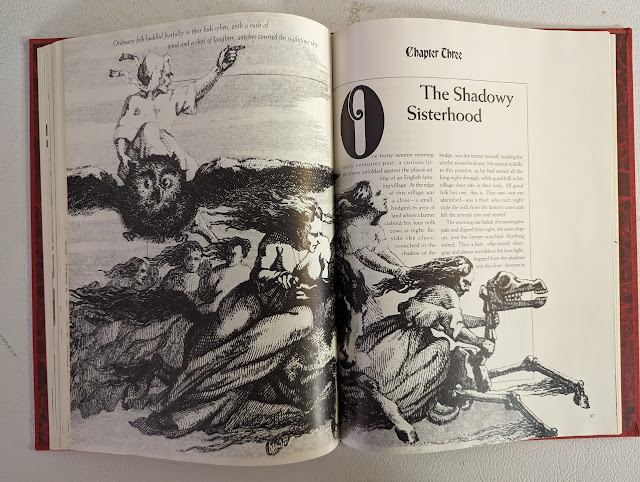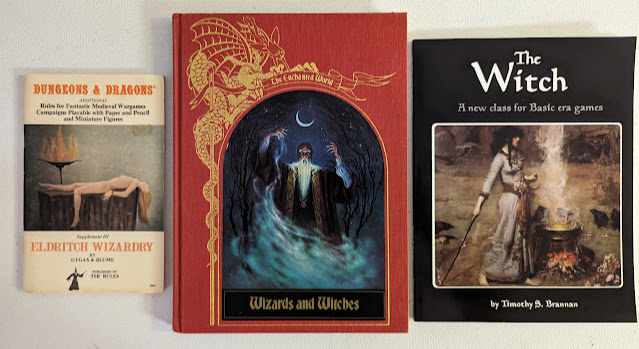I knew my exploration of the Forgotten Realms would take me to new and unexpected places. I just didn't think it was going to be this soon.
In my exploration of the Forgotten Realms product Moonshae, I discovered an interesting bit of knowledge. In the back of that book it mentions that Adventure Module N4 Treasure Hunt can be used with the Moonshae Islands. I later discovered that the islands in N4 were moved over to the Forgotten Realms for this purpose. So I had to switch courses and check out this module. I am really happy I did.
This module is not just an introduction module, but maybe THE introduction to the game module. Where you have an honest-to-Gary Session 0 and start with 0-Level characters in 1986. Given I am new to all things Realms, I might as well start at level 0!
N4 Treasure Hunt
by Aaron Allston, 48 pages (2 full color map pages, 36 pages of adventure, 10 pages of character profiles) black & white interiors. Art by Stephen Fabian. Cartographers: David F. "Diesel" LaForce, Stephen D. Sullivan, Bill Reuter, Stephanie Tabat. Cover art by Jeff Easley/
For this review, I am considering the PDF and Print on Demand version from DriveThruRPG/DMSGuild.
Treasure Hunt is a completely introductory adventure for players of the Advanced Dungeons & Dragons 1st Edition game. I say "players" since I feel this adventure still requires a bit of rules savvy from the Dungeon Master, at least in terms of some of the lifts needed to work with the 0-level characters. However, reading this one nearly 40 years later, with honestly tens of thousands of hours spent on this game, there are nice gems here.
Speaking of which. I am not going to attempt to judge this adventure by the same yardstick as new Level-0 or the so-called "Funnel" adventures. That is not fair to the author nor the adventure itself. This has to judged on the merits of its time. But I will tell you this, I'd run this today, as is, with no changes to be honest.
There is a Player's Introduction and Dungeon Master's Introduction.
This is the most interesting parts for me today since they cover the rules of rolling up and playing Level-0 characters. For starters, you don't have a class yet. You are a Normal Human (or elf, or half-elf, or whatever), and you have 1d6 hit points and maybe a secondary skill. You don't even have an alignment. The plot revolves around your character, either one you make or use from the starting characters, being kidnapped by pirates, and then your pirate captors are shipwrecked and mostly all killed. Now, you are stuck in the Korinn Archipelago, later added to the north of the Moonshaes.
From here the new PCs work out an escape plan and defeat their first enemy, the last pirate.
As the players play through the challenges presented on these islands they can build up what their character does and earn some XP. They are all 500 xp away from level 1. The adventure explains that even 1st level characters have some training. A fighter at level 1 is called a Veteran. A 1st level Cleric is an Acolyte. Even thieves and magic-users have some skills at first level that 0-levels do not. Want to be a thief? Try picking that lock. Want to be a Cleric? What do you feel when you enter the Temple of the Goddess and how do you react? You won't know till the end (or near that) and you won't get there till you try.
Frankly, it is great. A fantastic set of mini-mechanics to get the story going and flowing.
The adventure itself is divided into six "episodes." And episode is a good word here since there is a bit of cinematic feel to this. It feels like Aaron Allston watched a lot of Raiders of the Lost Ark, or more to the point, Romancing the Stone. This is a good thing.
Each episode gives the new PCs something tangible to do. Defeat the pirate, stop the orcs and goblins, explore the Temple, explore the Sea King's Manor, and so on. While there is a great feel to all of this, add a bit of the Moonshaes to it, and thus some Celtic and Old Norse culture to it all, and it becomes a fun mix.
Even for the time, the adventure is a bit linear, but not in a terrible way. I mean, let's be honest, the plot is "I've been captured, now I am free, but how do I get out of here?" At the end of each episode, there is a debrief for the DM on handling anything that went amiss, tracking the character's class and alignment progression, and so on. There are even contingencies if certain NPCs are not encountered or die before they are supposed to do something. So, linear but with enough branches to keep it fresh.
Experience points are tracked all along the way, so there is a chance the characters will break the 500 XP threshold by the end of episode 5.
There are appendices on "What if Things Go Wrong" or "What if the Character Dies?" and all are handled pretty well. There are some clever Player's Maps and the map of the islands.
The character profiles in the back can be used as potential PCs or NPCs. A few are even worded to be male or female. Someone online would have screamed, "Woke!" at it, but it is presented here as just one of many options. I do feel more care was taken here to entice both male and female new players to the game.
This adventure is a good one for new players. The only thing missing here is some more guidance for new DMs. Something that B2 Keep on the Borderlands does rather well. Maybe the perfect starting trilogy is this adventure, then T1 the Village of Hommlet, and ending with B2 Keep on the Borderlands.
About the Print-on-Demand Scan
This is a print of a scanned image. So there is some fuzziness to some of the letters. It is obviously not as sharp as, say, a direct from digital print. It is still very readable. Getting the PoD and PDF will give a book you can use and be able to print out the character cards and player maps as needed.
Treasure Hunt in the Forgotten Realms
I already mentioned that the location of this adventure, the Korinn Archipelago, was dropped as right into the Moonshae Isles, which were already an addition by Douglas Niles to the Forgotten Realms, supplanting Ed Greenwood's own islands that were there. Already the Realms are evolving in front of our eyes and it is not even fully 1987 yet.
As an adventure, it is also a great start for Realms-centric characters. I had already planned to make my start in the Moonshaes, this just sets characters on the path of adventure in a different way. You didn't meet in a tavern or bar. You were captured and met your companions along the way. Something we will see again in Baldur's Gate 3 or even, to a degree, Skyrim.
The Temple of the Goddess in Episode Three can easily become a Temple to the Earth Mother / Chauntea. Lots of different Goddesses are given as example, but I thought it might be fun if the Earth Mother appears as all of them. Playing into my fascination with "the Goddess is all goddesses" motif.
Sinéad's Perspective
At the outset of these reviews, I said I wanted to explore the Realms through the eyes of a native, but one that was just as naïve as me. Sinéad is that character. She was chosen partially because she has a pseudo-Celtic background (so starting the Moonshaes was great). She was a Forgotten Realms native already, but mostly because she was just so much damn fun in Baldur's Gate 3.
For Sinéad, I re-did her sheet as a 0-level character. The DMG suggests using Method I for rolling up characters; 4d6 drop the lowest and arrange as desired. Well. I did that with Sinéad as a first level, so I opted to use a trick I used all the time in Unisystem's point build, I just knocked a few points off.
Her "1st Level" abilities add up to 92, so I took 10 off and re-distributed the points among her six abilities. Then I added on back. My world. My rules. I also felt that since her main defining feature at this point is that she is a half-elf, I decided that was her class. So I used a Basic-D&D style sheet. The one I have above is from New Big Dragon Games Unlimited's GM screen.
Since my concept of her is a proto-Bard at this point, and she is young, I figure she really doesn't have any secondary skills yet. At best, she can play the lute or flute. If she was captured by pirates, she likely lost whatever she had. This would be a bigger loss to her than however much gold she had.
At the end of the adventure, she becomes a magic-user with her one spell, Burning Hands. The same spell she accidentally burned down the barn she was in back at home, which was why she was running and how she got caught by pirates.
After this adventure, how could she possibly go home? There is an entire world out there.
Besides, she survived pirates. What can be worse than that?
Oh. And since I have had friends do this exact thing, after her adventure here, Sinéad uses the dagger she found to chop off her hair and dye some of it. Seems like a perfectly reasonable trauma reaction to me.
She is just a kid at this point.
Final Thoughts
If I had been smarter, I would have used this first when re-creating Sinéad on paper, but as it is, this worked out fine. This is also a great new-to-me adventure for a new-to-me world. While I LOVE B2 Keep on the Borderlands, it is too closely tied to Greyhawk and the Known World for me to really adapt it over the Realms. Would it even fit in the Realms? I am sure many online users have found a home for it. Maybe one day I could as well, but for now, this is a great adventure to start with. In fact, I want to go through all the N, aka "Novice," adventures and see how they fit my needs here. But for now, I am pretty happy with this.
